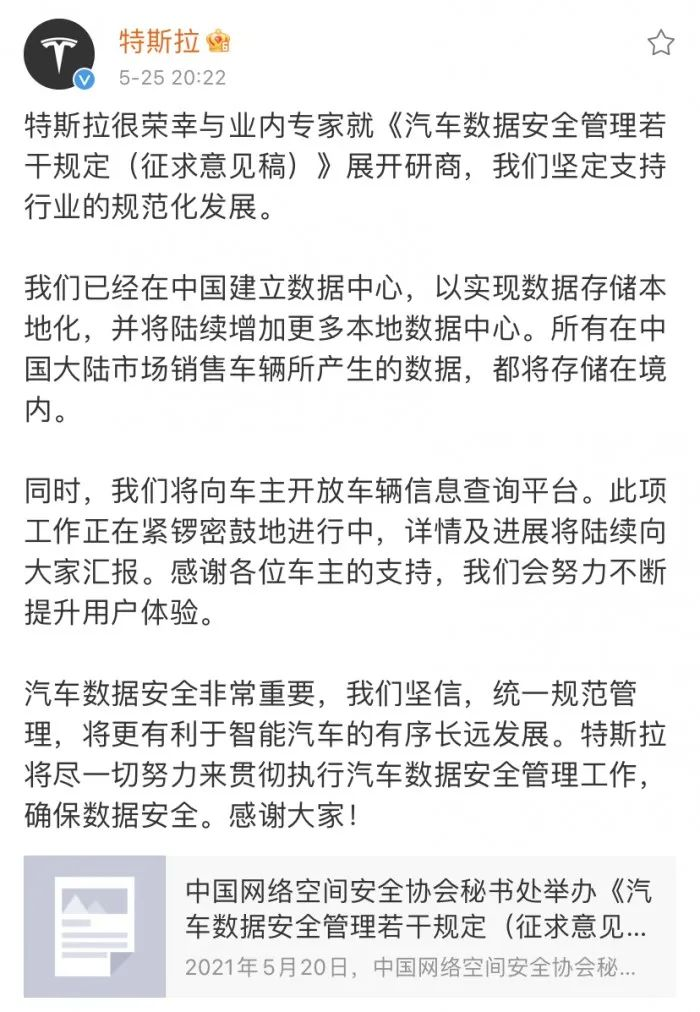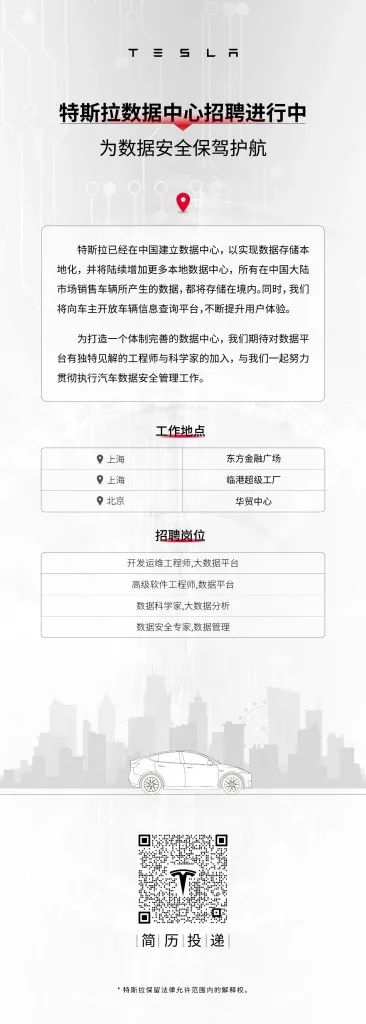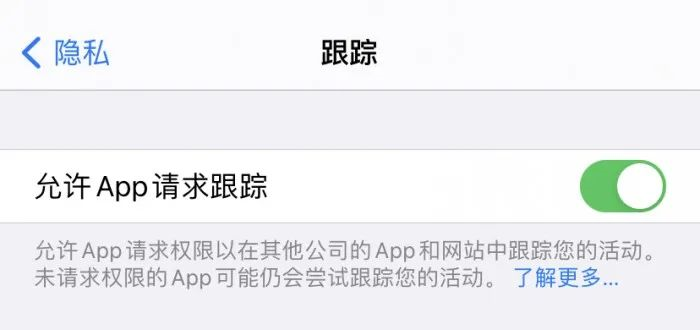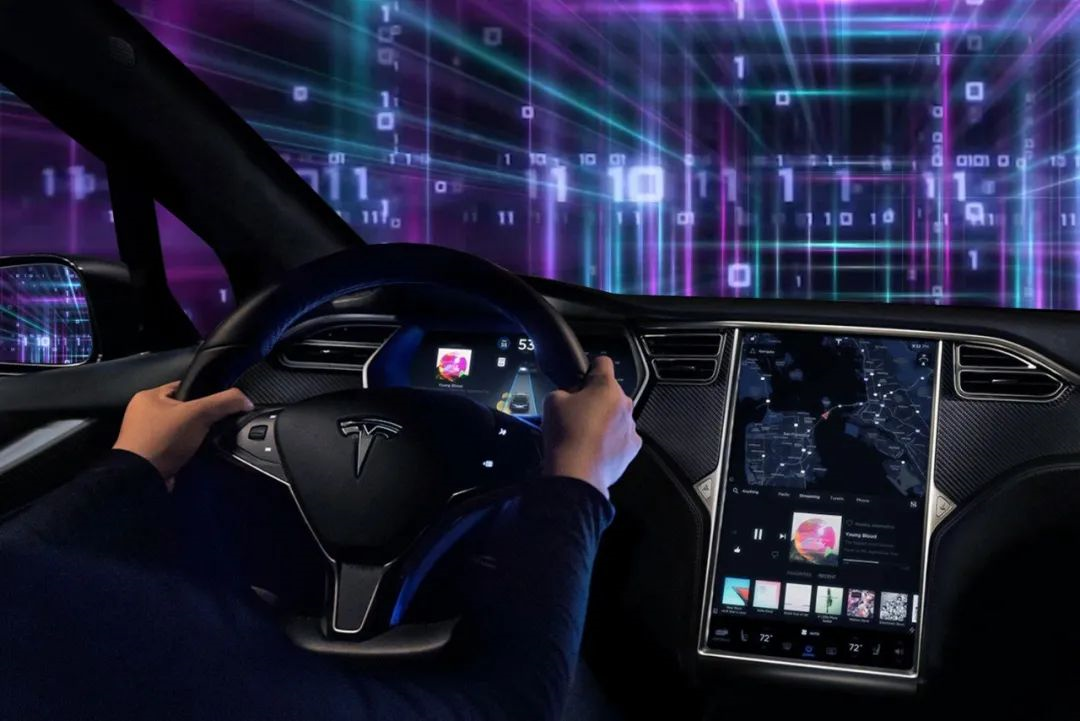Author: Michelin
Recently, Tesla’s situation is like a squid on a hot plate, being criticized by public opinion below and pressured by regulations above.
On May 25th, Tesla, which had been silent for a while, finally gave a positive response: it has established a data center in China, and all data generated by vehicles sold in mainland China market will be stored domestically.

Although as early as April, Tesla had announced its plan to establish data centers in China, this brief and hasty statement is hard not to be linked with the requirements for automobile data security work (soliciting opinions) released two weeks ago and the notorious “Tesla bans” announcement.
Tesla’s “Cloud in Guizhou”?
When it comes to building data centers in China, it’s easy to think of Apple.

As the first foreign company to build a data center in China, the landing of iCloud China data center was not only considering the stability of data connectivity and transmission speed, but also more about policy promotion. In June 2017, the Cybersecurity Law of the People’s Republic of China began to be enforced, and in July, Apple announced plans to invest in iCloud data center. So Tesla’s footsteps seem to be a copycat of the predecessor.
Despite choosing to establish data centers in China, Tesla and Apple have different strategies.
Just when everyone was speculating on which domestic company Tesla would cooperate with and who would become Tesla’s “cloud in Guizhou”, today, Tesla China released a new recruitment information:
“To create a systematic data center, we look forward to the unique insights of engineers and scientists on data platforms to join us in implementing automobile data security management.”

It seems that Tesla is not ready to give up the operation of data platform completely like Apple. After all, there is still a big difference between data for cars and data for smartphones.
Data on smartphones, such as photos and files uploaded to iCloud, phone numbers, browsing software, and even payment information, are closely related to our lives, directly affecting whether our photos will be leaked and whether we will receive frequent advertising SMS and harassing phone calls.The data collected by the external cameras, LiDAR and other sensors on a car, as well as the information around the road, and even the user’s expressions and habits captured by the in-car cameras, seem to have little direct impact on the user’s life or affect the evolution of the iPhone or iCloud. However, these data are very important for the car itself.
Even with the most sensitive sensors, powerful computing and tens of thousands of tests on a simulation platform, corner cases may still occur during actual driving when using autonomous driving. The solution to these cases can only be found in actual data produced in real scenarios. The highly intelligent interactive functions in the smart cabin are also derived from large amounts of data training.
It is precisely because of this data that cars today can receive new upgrades and experiences via OTA remote updates after hardware purchase, achieving a “take it from the user, use it for the user” model.
Because of the close connection between data and car functionality, the establishment of China’s data center makes people curious: What changes will the data management center bring us?
For users, the change in data storage location is not particularly noticeable. While we may feel a slight increase in upload and download speeds on iCloud, this feeling is hardly perceivable with cars.
However, for Tesla, this may be a significant change. Musk once said that autonomous driving functions rely heavily on data for different scenarios. The reason why FSD works best in California is because Tesla’s autonomous driving engineering team is based in California, and the relevant data mainly comes from California during the R&D phase. Effective data generated in other regions also need to be transmitted back to headquarters for localized algorithm optimization and validation.
This means that in order to make Tesla more suitable for Chinese road conditions and driving habits, Chinese data is indispensable. Either the data is de-identified and exported under supervision, but this could lead to a reduction in the effectiveness of the development, or the data is handed over to the local team for technical iteration and optimization.
Although the expansion plan of the Shanghai Super Factory was halted recently, many people believed that it was a signal that Tesla would no longer regard Shanghai as the future production core. However, the establishment of the data center may force Tesla to further expand its research and development team in China to maintain its 42% market share in the world.At the beginning of this year, Tesla advertised several software positions in China, such as information entertainment system, map navigation, and mobile apps, among others.
Today, we have seen recruitment information for data centers, and the next step is to expand Tesla’s autonomous driving team in China, which may only be a matter of time.
Finally
Why did Tesla establish data centers?
The main reason, of course, is government regulation. However, from the perspective of users, I hope this is not just for regulatory compliance.
With controversy and popularity comes sudden attention to the data generated by cars from Tesla. It is unclear if sensor collected road data and cabin-captured user information around the privacy and security issues.
These data are not unique to Tesla, and all smart cars are built on data. As “Who controls your vehicle data?” wrote:
Conservatively estimated, the amount of data generated by a test car every day can reach 10TB. How to manage and standardize these huge amounts of data?
The development of smart cars is too fast, so that not only users are unfamiliar with such a huge amount of data, but also the security and supervision of data has just begun.
This reminds me of Apple. Not long ago, they released ios 14.5, and after the system update, all apps will prompt users with an “Allow App to Request Tracking” option upon first opening. According to Singular statistics, only 16.8% of users agreed since the function was added. You see, in situations without a choice, we silently accept apps accessing our data and privacy. However, once given the choice, most people will choose to click “No.”

Perhaps one day in the future, when we start a car, a similar dialogue box will pop up on the central control screen, and whether to choose “Agree” will be up to you.
This article is a translation by ChatGPT of a Chinese report from 42HOW. If you have any questions about it, please email bd@42how.com.
